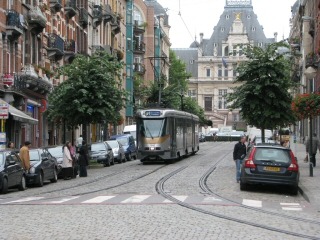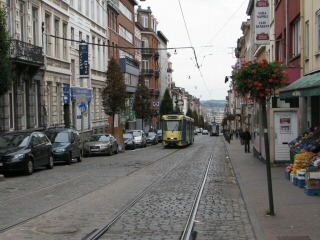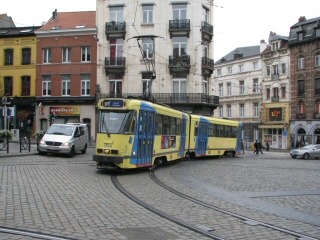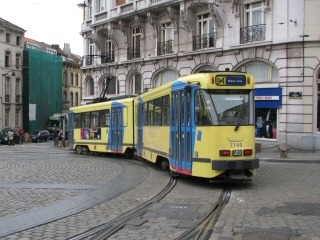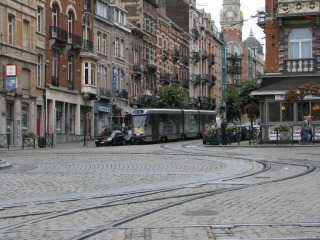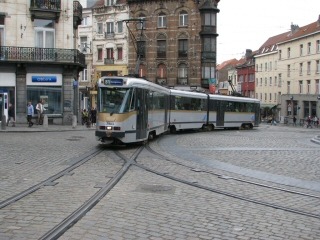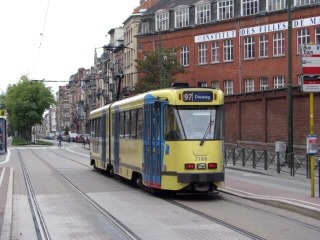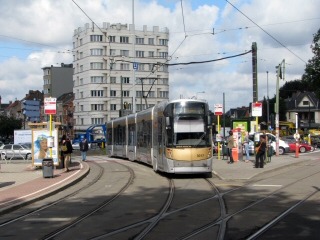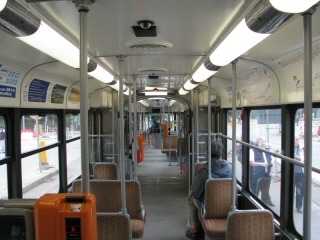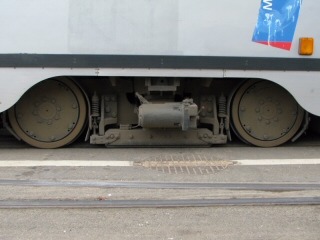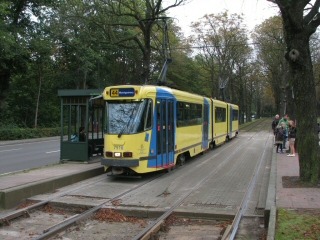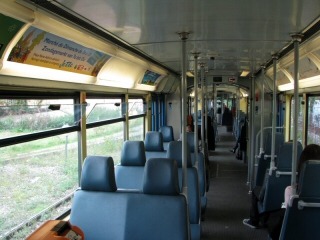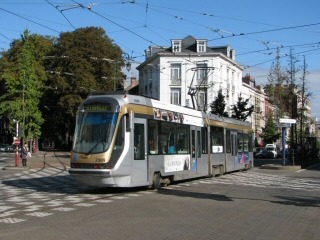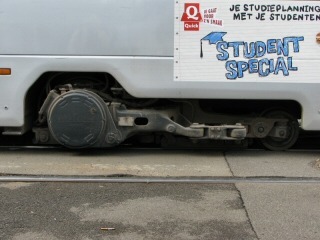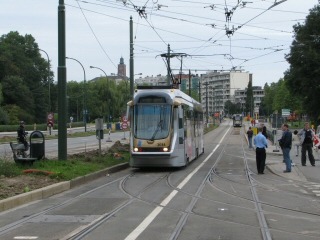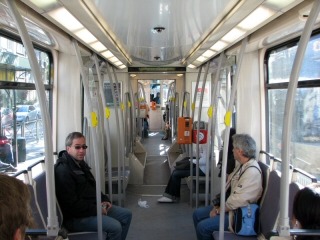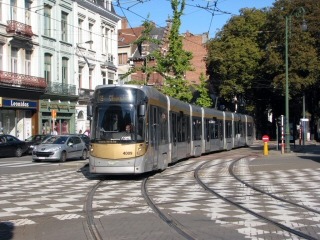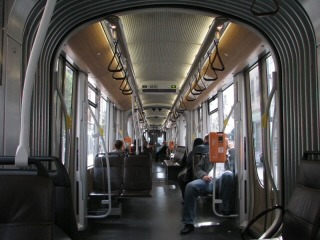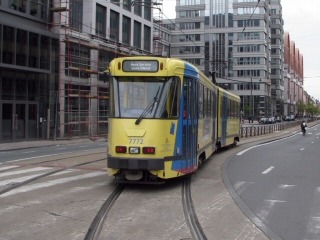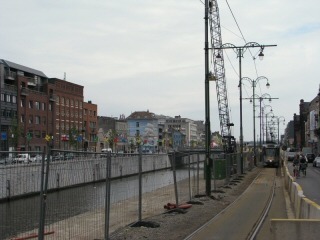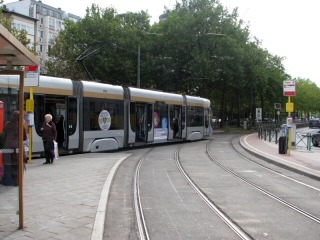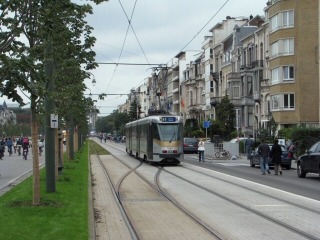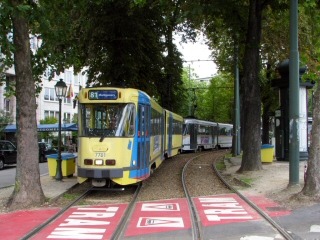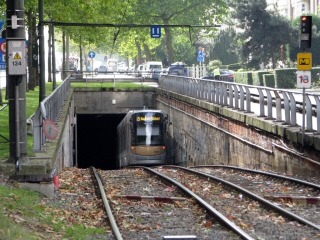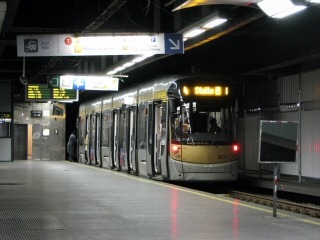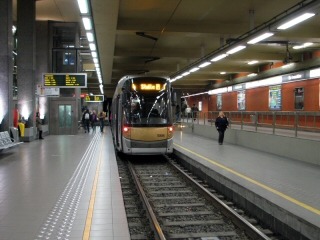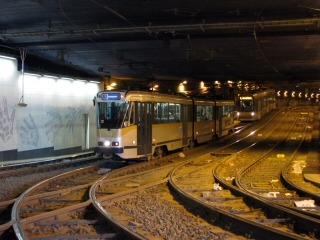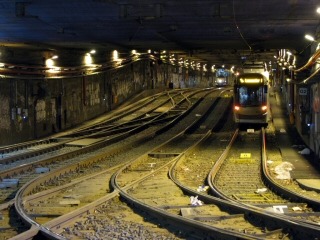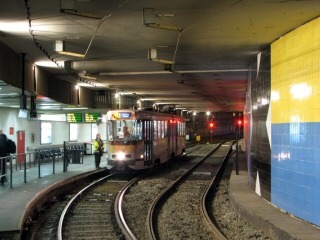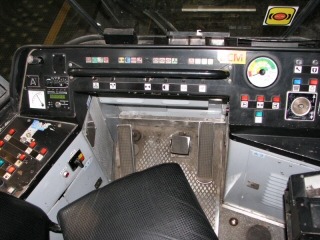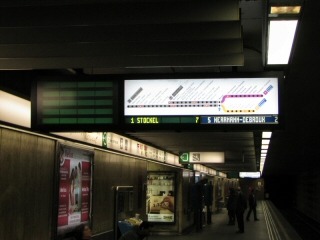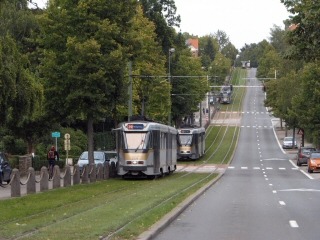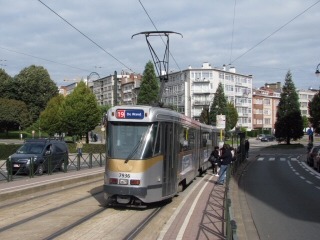budapest
other hungarian
close-up
lost rails
other countries
Hier geht's zur deutschsprachigen Version / Kattints ide a magyar változathoz
The capital of Belgium has different layers of public transportation, ranging from heavy rail operated by SNCB/NMBS to trams, metros and buses operated by the municipal company STIB/MIVB - but bus lines of wallonian transit operator TEC and flemish transit operator DeLijn also reach the territory of the self-governing Brussels region. Besides the 40-kilometer metro network, the 130-kilometer tram system is the backbone of the urban transit network.
Let's start with what I consider the most interesting spot of the Brussels tramway: the Barriére de St-Gilles/Bareel St-Gillis roundabout!
This is a circus laying on a hillside, with trams coming and leaving from/to three directions. Originally all streets were served by tracks, but the layout is still remarkable even with just three.
I don't say this facility is easily photographable, but it's worth a try!
Apart from this tram roundabout, which is a tramspotter's dream, "tram scenery" in Brussels is varying, and a bit erratic - at least in contrast to what one would expect of the center of the quite technocratic European Union :)
Let's see the rolling stock available in autumn 2010! Brussels became PCC territory in 1950s, and although the 4-axle cars were withdrawn earlier this year, there are still lots of the articulated version remaining.
These trams are very narrow (2.2 meters), and the doors are even narrower. Nevertheless, I saw several prams squeezed on board - local people seem to cope with the possibilities.
The silver-gold livery seen above is the current one, but we saw quite a number still sporting the yellow and blue one, too (left). To the right: a look at the bogie.
The eight-axle Brussels PCCs were built in 1977-78, they have a more modern interior.
The "Tram 2000" (left) was an early attempt at a low-floor tram, sporting a strange "articulated bogie" (right) resembling a maximum traction bogie without axles and with hub motors.
Another T2000 near depot Woluve (left). To the right: the interior of the vehicle.
The 3000 and 4000-class belong to the Bombardier Flexity Outlook Cityrunner family. The former is 32 meters, while the latter is 43 meters long. Both are 2.3 meters wide, which is still a bit narrow - but outside of overcrowded rush-hours they look quite smart from the inside!
Let's just ride around!
To the left: 6-axle PCC out of service near Gare du Midi. To the right: a Unimog two-way works car of the STIB/MIVB.
To the left: at Porte d'Anderlecht. To the right: temporary single-track running at Porte De Flandre.
To the right: a butterfly junction somewhere - I failed to notice the location. To the right: this platform is too short, but long trams are used anyway - this would not have been allowed in Hungary, quite possibly with the reason "you can't do that in the EU!" ;)
Trams around Montgomery. These photos were taken on a car-free day, so there were large masses of cyclists around. Yet, public transport was still operating on a normal sunday schedule, leading to huge crowds at stops and on the vehicles!
"Premetro" is basically an underground tram built in a way so that later it can be converted to a fully-fledged heavy metro. Brussels has practiced this since the 1960s, and some of those premetro lines have already been converted to metro lines. Yet, there are still stretches that remain tramways - maybe for ever. I also count underground tramway stretches as premetro, while other sources only count line 3 and 4 as such.
To the left: the station Lemonnier a busy junction with four tracks. To the right: the station De Brouckere looks quite smart. One can see the planned high floor for the usage with "proper" metro cars (right-hand side, with bars), and the lower platforms cut into former for the usage with trams.
A short video of premetro life. The extremely dense traffic at Lemonnier was due to some hickup: there were trams reversing near the station, while the PA was shouting something about a traffic disruption.
Stills of those hectic minutes: trams queuing in front of the junction (left) and a lone tram that stood on that track for a while without passengers (right).
Montgomery has trams terminating on the surface, a metro station beneath, but also a subterranean reversing loop acting as terminus for other tram lines (left). As far as I know, there are plans to discontinue the reversing loop and convert the station into a stub terminus. To the right: the driver's cab of a PCC.
Just for the record - two photos taken on the normal metro system. To the left: Stockel is the terminus of metro line 1. To the right: passenger information display at a station used by two different metro lines.
To the left: a nice steep slope along tram line 39. To the right: a not so nice congestion occuring two minutes later, as the aftermath of a points failure.
More PCCs under blue-ish skies. To the left: Guillaume De Greef, to the right: Heysel. Strange to see a terminus with 2+2 long platforms, but with just a quite short stub track for reversing...
And another short video for the end of the page. I only had about a day for riding tram lines, so this is not quite a full description of the Brussels tram system, I know :)
Back to the top Back to the main page
